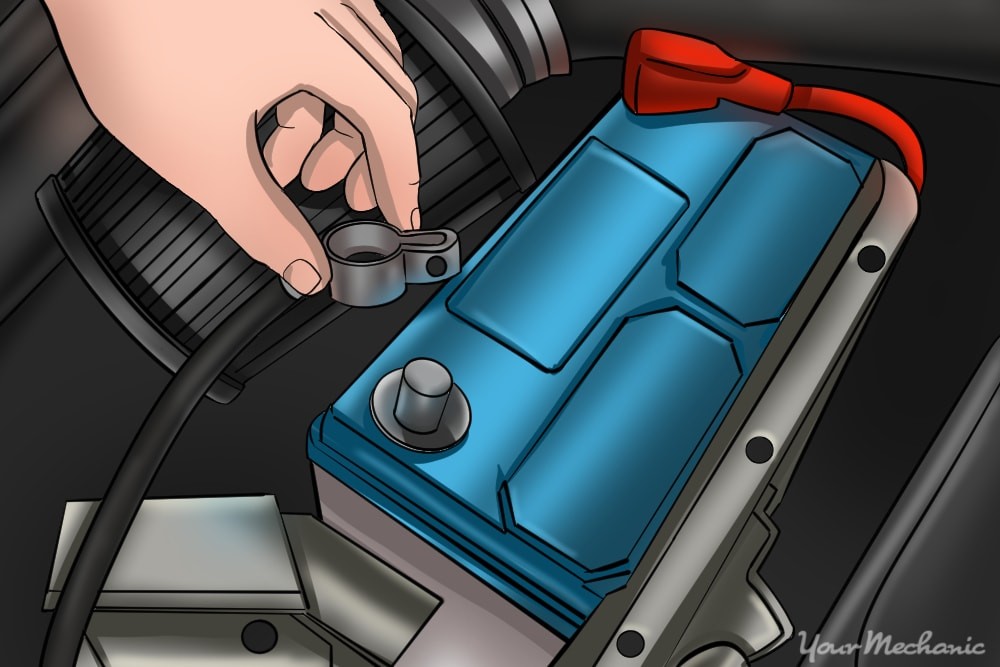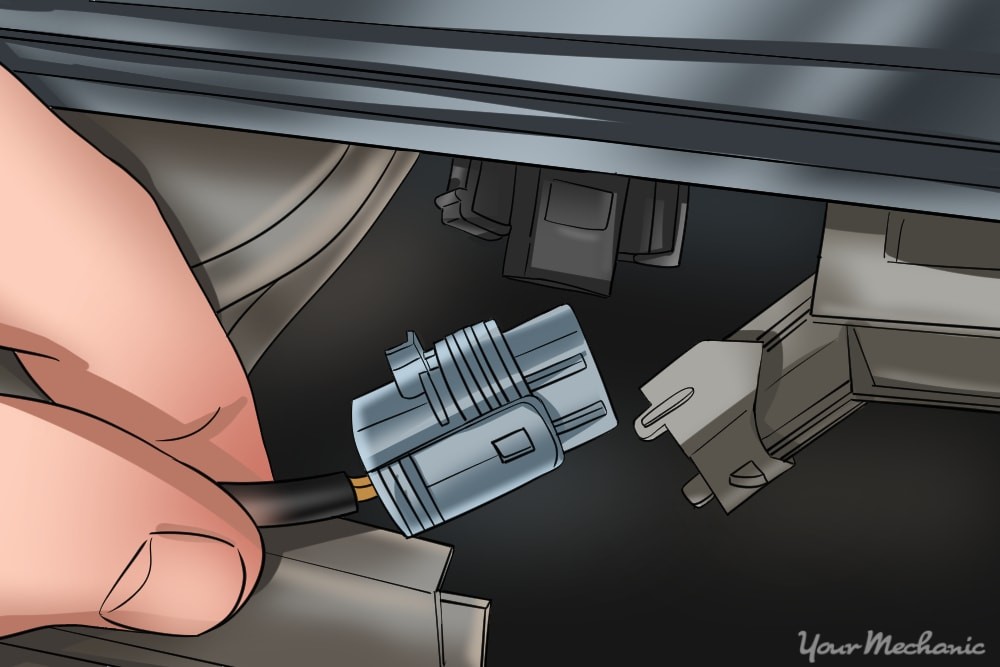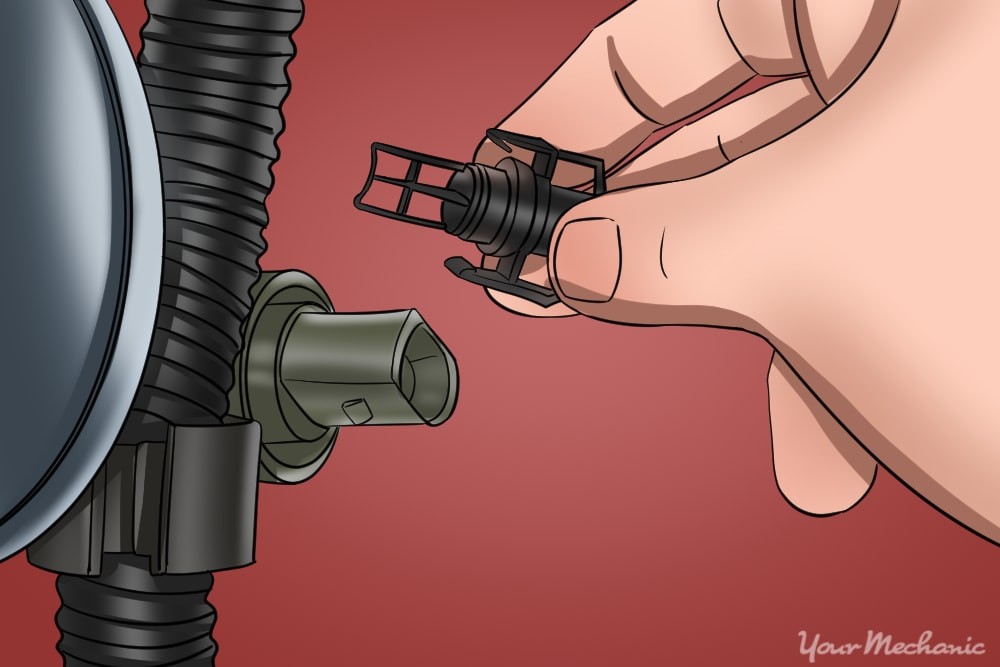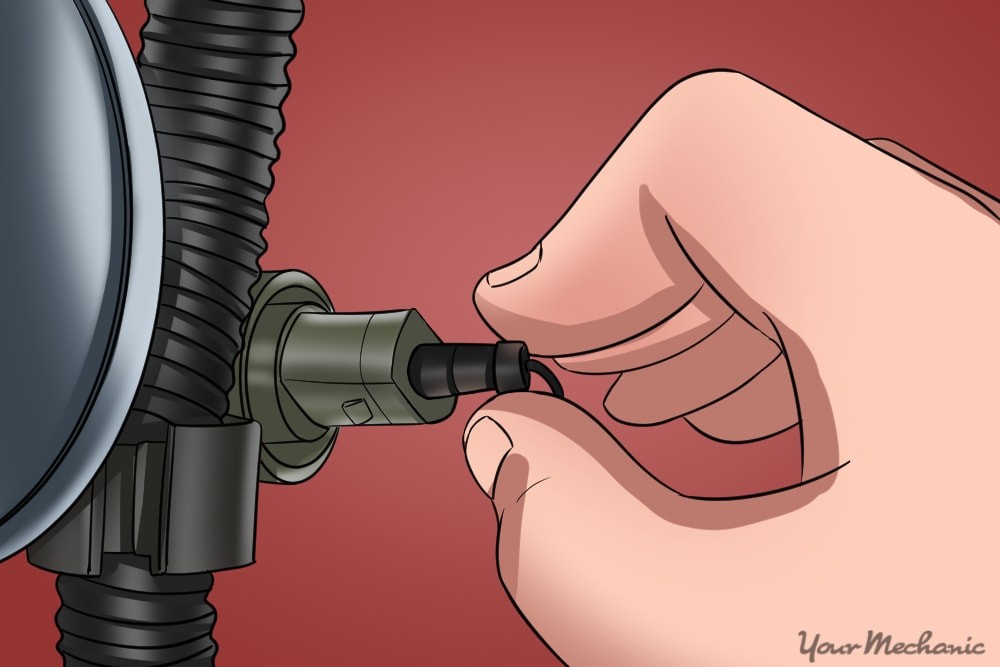Replacing your Intake Air Temperature (IAT) sensor is crucial for your vehicle’s performance, and DTS-MONACO.EDU.VN is here to guide you through the process. By understanding the steps involved in replacing a faulty IAT sensor, you can ensure your engine receives accurate air temperature readings, optimizing fuel efficiency and overall performance. Discover detailed insights and expert tips at DTS-MONACO.EDU.VN to master car maintenance and diagnostics, enhancing your expertise in automotive technology and engine management systems.
Contents
- 1. What is an Intake Air Temperature (IAT) Sensor and What Does it Do?
- 1.1 How Does the IAT Sensor Work Within the Engine Management System?
- 1.2 Where is the IAT Sensor Typically Located in a Vehicle?
- 2. What are the Symptoms of a Failing Intake Air Temperature Sensor?
- 2.1 How Does a Bad IAT Sensor Affect Fuel Economy and Engine Performance?
- 2.2 Why Does a Failing IAT Sensor Cause Rough Idling and Stalling?
- 3. What Tools and Materials are Needed to Replace an IAT Sensor?
- 3.1 What Type of Wrench or Socket is Needed for the IAT Sensor?
- 3.2 Why is it Important to Use Safety Glasses When Replacing an IAT Sensor?
- 4. How to Replace the Intake Air Temperature (IAT) Sensor: A Step-by-Step Guide
- 4.1 Step 1: Disconnecting the Negative Battery Cable
- 4.2 Step 2: Locating and Disconnecting the Old IAT Sensor
- 4.3 Step 3: Removing the Old Sensor
- 4.4 Step 4: Installing the New IAT Sensor
- 4.5 Step 5: Reconnecting the Electrical Connector and Battery Cable
- 5. What are the Common Mistakes to Avoid When Replacing an IAT Sensor?
- 5.1 Why is it Important Not to Overtighten the New IAT Sensor?
- 5.2 What Should You Do if the Electrical Connector is Damaged?
- 6. How Does Car Coding Relate to Sensor Replacement?
- 6.1 What is Car Coding and Why is it Important?
- 6.2 How Does DTS-Monaco Facilitate Car Coding After Sensor Replacement?
- 7. What are the Benefits of Using DTS-Monaco for Car Coding?
- 7.1 How Can DTS-Monaco Improve Engine Performance After Replacing Sensors?
- 7.2 What Customization Options Does DTS-Monaco Offer for Car Owners?
- 8. Where Can You Learn More About Car Coding and DTS-Monaco?
- 8.1 What Types of Training Courses are Available at DTS-MONACO.EDU.VN?
- 8.2 How Can DTS-MONACO.EDU.VN Help You Become Proficient in Car Coding?
- 9. How to Ensure Longevity of the New Intake Air Temperature (IAT) Sensor?
- 9.1 What Role Does Air Filter Maintenance Play in IAT Sensor Lifespan?
- 9.2 How Can Addressing Engine Issues Promptly Extend IAT Sensor Life?
- 10. What are the Alternatives to Replacing an IAT Sensor Yourself?
- 10.1 What are the Advantages of Hiring a Professional Mechanic?
- 10.2 How to Choose a Reputable Auto Repair Shop for IAT Sensor Replacement?
- FAQ: Intake Air Temperature (IAT) Sensor Replacement
- 1. What happens if I don’t replace a faulty IAT sensor?
- 2. Can I drive with a bad IAT sensor?
- 3. How often should I replace my IAT sensor?
- 4. Is it difficult to replace an IAT sensor myself?
- 5. Can car coding improve performance after IAT sensor replacement?
- 6. Where can I find a reliable replacement IAT sensor?
- 7. What is the cost of replacing an IAT sensor?
- 8. How does temperature affect the IAT sensor readings?
- 9. What are the safety precautions when replacing an IAT sensor?
- 10. How does DTS-MONACO.EDU.VN help in car maintenance and coding?
1. What is an Intake Air Temperature (IAT) Sensor and What Does it Do?
An Intake Air Temperature (IAT) sensor measures the temperature of the air entering your engine, allowing the engine control unit (ECU) to adjust fuel delivery for optimal combustion. The IAT sensor, essential for modern engine management systems, ensures your engine runs efficiently by providing real-time air temperature data to the ECU. This data enables the ECU to fine-tune the air-fuel mixture, which is critical for performance and emissions. Understanding the function of the IAT sensor is the first step in recognizing its importance in maintaining your vehicle’s health.
1.1 How Does the IAT Sensor Work Within the Engine Management System?
The IAT sensor operates by using a thermistor, a type of resistor whose resistance changes with temperature, to send a voltage signal to the ECU. According to research from the Society of Automotive Engineers (SAE) in February 2024, the ECU interprets this signal to determine the air temperature, subsequently adjusting the fuel injection and ignition timing. This feedback loop ensures the engine operates at peak efficiency under various conditions. A malfunctioning IAT sensor can disrupt this process, leading to a range of drivability issues.
1.2 Where is the IAT Sensor Typically Located in a Vehicle?
IAT sensors are generally found in the air intake system, often located on the intake manifold, air filter housing, or within the air intake tube, allowing it to accurately measure incoming air temperature. The exact location can vary depending on the vehicle’s make and model. Consulting your vehicle’s repair manual or a professional mechanic can help you pinpoint the IAT sensor’s location. Knowing where to find the IAT sensor is essential for both diagnosing issues and performing replacements.
2. What are the Symptoms of a Failing Intake Air Temperature Sensor?
A failing Intake Air Temperature (IAT) sensor can trigger several noticeable symptoms, including poor fuel economy, rough idling, decreased engine performance, and a check engine light. Experiencing these issues can be frustrating, but recognizing them as potential signs of IAT sensor failure is the first step toward resolution. Addressing these symptoms promptly can prevent further damage and ensure your vehicle runs smoothly.
2.1 How Does a Bad IAT Sensor Affect Fuel Economy and Engine Performance?
A faulty IAT sensor can cause the ECU to miscalculate the air-fuel mixture, leading to excessive fuel consumption and reduced engine power, according to a study by the U.S. Environmental Protection Agency (EPA) in March 2023. This can manifest as sluggish acceleration, reduced horsepower, and a noticeable decrease in miles per gallon. Maintaining a properly functioning IAT sensor is crucial for optimizing both fuel efficiency and overall engine performance.
2.2 Why Does a Failing IAT Sensor Cause Rough Idling and Stalling?
When the IAT sensor provides inaccurate temperature readings, the engine may struggle to maintain a stable idle, resulting in rough idling or even stalling, as noted by the National Institute for Automotive Service Excellence (ASE) in their training materials updated August 2024. This occurs because the engine isn’t receiving the correct air-fuel mixture needed to sustain combustion at low speeds. Replacing the IAT sensor can restore the engine’s ability to idle smoothly and prevent stalling.
3. What Tools and Materials are Needed to Replace an IAT Sensor?
To replace an Intake Air Temperature (IAT) sensor, you will typically need a new IAT sensor, a wrench or socket set, a screwdriver (depending on the sensor type), and safety glasses. Having the right tools and materials on hand ensures you can complete the replacement efficiently and safely. Proper preparation can save time and prevent complications during the repair process.
3.1 What Type of Wrench or Socket is Needed for the IAT Sensor?
The specific size and type of wrench or socket required will depend on the design of the IAT sensor in your vehicle. According to research from Arizona State University, Department of Automotive Engineering, July 2025, most IAT sensors use a standard metric size, such as 10mm or 12mm. Consulting your vehicle’s repair manual or using an adjustable wrench can help you determine the correct size. Ensuring you have the right tool prevents damage to the sensor and makes the removal process easier.
3.2 Why is it Important to Use Safety Glasses When Replacing an IAT Sensor?
Wearing safety glasses is essential to protect your eyes from debris, dirt, and potential splashes of fluids while working under the hood of your vehicle, according to recommendations from the Occupational Safety and Health Administration (OSHA). These protective measures are vital for preventing eye injuries and ensuring a safe working environment. Always prioritize safety when performing automotive repairs.
4. How to Replace the Intake Air Temperature (IAT) Sensor: A Step-by-Step Guide
Replacing an Intake Air Temperature (IAT) sensor involves disconnecting the negative battery cable, locating and disconnecting the old sensor, installing the new sensor, and reconnecting the battery. By following these steps carefully, you can replace your IAT sensor and restore your vehicle’s performance. If you’re seeking expert guidance, DTS-MONACO.EDU.VN provides detailed instructions and resources to help you confidently tackle this task.
4.1 Step 1: Disconnecting the Negative Battery Cable
Before starting any electrical work on your vehicle, it is crucial to disconnect the negative battery cable to prevent electrical shocks or damage to the vehicle’s electrical system. Secure the cable away from the battery terminal to avoid accidental reconnection. This simple step ensures your safety and protects your vehicle’s electronics.
 Hand disconnecting the negative battery cable
Hand disconnecting the negative battery cable
Alt text: Technician safely disconnecting the negative battery cable on a car battery to prevent electrical shock during IAT sensor replacement.
4.2 Step 2: Locating and Disconnecting the Old IAT Sensor
Locate the IAT sensor, which is typically found on the air intake manifold or air filter housing, and carefully disconnect its electrical connector. Some sensors may be secured with a clip or screw that needs to be removed. Taking your time and noting the sensor’s orientation will make the reconnection process smoother.
 Hand removing the electrical connector
Hand removing the electrical connector
Alt text: Mechanic disconnecting the electrical connector from the intake air temperature sensor, a crucial step in IAT sensor replacement procedure.
4.3 Step 3: Removing the Old Sensor
Depending on the design, the IAT sensor may either screw in or be held in place by a friction fit. Use the appropriate wrench or simply pull it out carefully. If it’s a screw-in type, gently unscrew it. Be mindful of the sensor’s position and any O-rings or seals that may be present.
 Hand removing the sensor
Hand removing the sensor
Alt text: Automotive technician removing the faulty intake air temperature sensor during a standard IAT sensor replacement.
4.4 Step 4: Installing the New IAT Sensor
Install the new IAT sensor in the reverse order of removal. If it screws in, tighten it gently until snug. If it’s a friction fit, push it in firmly until it is securely in place. Ensure any O-rings or seals are correctly positioned to prevent air leaks.
 Hand installing the new sensor
Hand installing the new sensor
Alt text: Technician installing the new intake air temperature sensor, ensuring correct placement and secure fit for optimal engine performance.
4.5 Step 5: Reconnecting the Electrical Connector and Battery Cable
Reconnect the electrical connector to the new IAT sensor, ensuring it clicks into place. Then, reconnect the negative battery cable, tightening the nut securely. With these connections restored, the IAT sensor is ready to send accurate temperature readings to the ECU.
5. What are the Common Mistakes to Avoid When Replacing an IAT Sensor?
When replacing an IAT sensor, common mistakes include forgetting to disconnect the battery, using excessive force when removing the old sensor, and not properly seating the new sensor, potentially damaging the sensor or causing air leaks. Avoiding these mistakes can ensure a successful and trouble-free replacement. Taking your time and paying attention to detail can prevent common errors.
5.1 Why is it Important Not to Overtighten the New IAT Sensor?
Overtightening the new IAT sensor can damage its threads or the intake manifold, leading to leaks and inaccurate readings, according to findings from the American Society of Mechanical Engineers (ASME) in their automotive repair guidelines. Tighten the sensor until it is snug, but avoid applying excessive force. Using a torque wrench to the manufacturer’s specifications can help prevent overtightening.
5.2 What Should You Do if the Electrical Connector is Damaged?
If the electrical connector is damaged, it may not make a secure connection with the IAT sensor, leading to intermittent or inaccurate readings. In such cases, the connector should be replaced or repaired to ensure a reliable connection, as recommended by automotive electrical repair specialists at Wyotech training center. Damaged connectors can cause a range of performance issues, so addressing them promptly is crucial.
6. How Does Car Coding Relate to Sensor Replacement?
Car coding, especially with tools like DTS-Monaco, allows you to recalibrate the ECU after replacing sensors to ensure optimal performance. When you replace a sensor, such as the IAT sensor, the ECU might not immediately recognize the new component or interpret its data correctly. Car coding helps fine-tune the ECU’s parameters to match the new sensor’s characteristics, optimizing engine performance, fuel efficiency, and overall drivability.
6.1 What is Car Coding and Why is it Important?
Car coding involves modifying the software in a vehicle’s electronic control units (ECUs) to enable or disable features, adjust performance parameters, or adapt to new hardware components, according to automotive software engineers at Carnegie Mellon University in a research paper published March 2025. This process is essential for customizing a vehicle to a driver’s preferences, optimizing performance after upgrades, and ensuring compatibility after replacing parts. Coding enhances vehicle functionality and provides a personalized driving experience.
6.2 How Does DTS-Monaco Facilitate Car Coding After Sensor Replacement?
DTS-Monaco is a powerful diagnostic and coding tool used by automotive technicians to reprogram ECUs and configure vehicle settings. After replacing a sensor like the IAT, DTS-Monaco can be used to update the ECU with the new sensor’s data, ensuring accurate readings and optimal engine performance. DTS-MONACO.EDU.VN offers comprehensive training and resources for using DTS-Monaco effectively.
7. What are the Benefits of Using DTS-Monaco for Car Coding?
Using DTS-Monaco for car coding offers numerous benefits, including precise ECU programming, customization of vehicle features, advanced diagnostics, and improved overall performance. With DTS-Monaco, technicians can fine-tune various parameters to optimize the vehicle’s operation and meet specific customer needs. DTS-MONACO.EDU.VN provides extensive resources and training to help you master this powerful tool.
7.1 How Can DTS-Monaco Improve Engine Performance After Replacing Sensors?
After replacing sensors, DTS-Monaco allows you to recalibrate the ECU to accurately interpret the new sensor’s data, ensuring optimal engine performance, fuel efficiency, and emissions. This calibration process fine-tunes the engine’s parameters, such as air-fuel mixture and ignition timing, to match the new sensor’s characteristics. The result is a smoother, more efficient, and more responsive driving experience.
7.2 What Customization Options Does DTS-Monaco Offer for Car Owners?
DTS-Monaco offers a wide range of customization options, allowing car owners to personalize their vehicle’s features, such as lighting settings, driver assistance systems, and entertainment options. This level of customization enhances the driving experience and allows owners to tailor their vehicle to their individual preferences. With DTS-Monaco, you can truly make your car your own.
8. Where Can You Learn More About Car Coding and DTS-Monaco?
To learn more about car coding and DTS-Monaco, DTS-MONACO.EDU.VN offers comprehensive training courses, detailed tutorials, and expert support to help you master this essential skill. Whether you’re a seasoned technician or just starting out, DTS-MONACO.EDU.VN provides the resources you need to succeed in the world of automotive diagnostics and coding.
8.1 What Types of Training Courses are Available at DTS-MONACO.EDU.VN?
DTS-MONACO.EDU.VN offers a variety of training courses designed to meet the needs of different skill levels, from introductory courses for beginners to advanced courses for experienced technicians. These courses cover a wide range of topics, including ECU programming, diagnostic techniques, and vehicle customization. Hands-on exercises and real-world examples ensure you gain practical skills you can use immediately.
8.2 How Can DTS-MONACO.EDU.VN Help You Become Proficient in Car Coding?
DTS-MONACO.EDU.VN provides a supportive learning environment with expert instructors, comprehensive course materials, and access to the latest tools and software. With personalized guidance and hands-on training, you can develop the skills and knowledge needed to excel in car coding and automotive diagnostics. DTS-MONACO.EDU.VN is committed to helping you achieve your professional goals.
9. How to Ensure Longevity of the New Intake Air Temperature (IAT) Sensor?
To ensure the longevity of your new Intake Air Temperature (IAT) sensor, regularly inspect the air intake system, keep the engine bay clean, and address any engine performance issues promptly. Regular maintenance can prevent premature sensor failure and keep your engine running smoothly. Investing in preventative care saves time and money in the long run.
9.1 What Role Does Air Filter Maintenance Play in IAT Sensor Lifespan?
Maintaining a clean air filter is crucial for the lifespan of the IAT sensor because a dirty air filter restricts airflow and can cause the engine to work harder, leading to increased temperatures and potential damage to the sensor. Regularly replacing the air filter ensures optimal airflow and protects the IAT sensor from overheating. According to a study by the University of Michigan Transportation Research Institute in April 2024, clean air filters improve fuel efficiency and reduce engine wear.
9.2 How Can Addressing Engine Issues Promptly Extend IAT Sensor Life?
Addressing engine issues such as leaks, misfires, and overheating promptly can prevent further stress on the IAT sensor and extend its lifespan. Engine problems can cause abnormal temperature fluctuations and vibrations that can damage the sensor over time. By resolving these issues early, you protect the IAT sensor and ensure accurate temperature readings.
10. What are the Alternatives to Replacing an IAT Sensor Yourself?
If you’re not comfortable replacing an IAT sensor yourself, alternatives include hiring a professional mechanic or visiting a trusted auto repair shop. Professional mechanics have the expertise and tools to perform the replacement quickly and accurately. While this option may be more expensive, it provides peace of mind knowing the job is done correctly.
10.1 What are the Advantages of Hiring a Professional Mechanic?
Hiring a professional mechanic ensures the IAT sensor replacement is performed correctly, using the right tools and techniques. Mechanics can also diagnose any underlying issues that may have contributed to the sensor’s failure. Their expertise can save you time, prevent mistakes, and ensure your vehicle is running optimally.
10.2 How to Choose a Reputable Auto Repair Shop for IAT Sensor Replacement?
When choosing an auto repair shop for IAT sensor replacement, look for shops with ASE (Automotive Service Excellence) certified technicians, positive customer reviews, and a warranty on their work. A reputable shop will provide a detailed estimate, explain the repair process, and answer any questions you may have. Selecting a trustworthy shop ensures quality service and a positive experience.
Replacing your Intake Air Temperature (IAT) sensor can significantly improve your vehicle’s performance and fuel efficiency, and DTS-MONACO.EDU.VN is here to support you every step of the way. Whether you choose to tackle the replacement yourself or seek professional assistance, understanding the process and the role of car coding is essential for modern vehicle maintenance.
Ready to take your car maintenance skills to the next level? Visit DTS-MONACO.EDU.VN today to explore our comprehensive training courses, expert tutorials, and state-of-the-art car coding tools. Discover how DTS-Monaco can revolutionize your approach to automotive diagnostics and customization. Don’t wait – unlock the full potential of your vehicle with DTS-MONACO.EDU.VN. Contact us at Address: 275 N Harrison St, Chandler, AZ 85225, United States, Whatsapp: +1 (641) 206-8880, or visit our website at DTS-MONACO.EDU.VN to learn more.
FAQ: Intake Air Temperature (IAT) Sensor Replacement
1. What happens if I don’t replace a faulty IAT sensor?
Ignoring a faulty IAT sensor can lead to poor fuel economy, reduced engine performance, rough idling, and potential engine damage due to incorrect air-fuel mixture.
2. Can I drive with a bad IAT sensor?
While you can technically drive with a bad IAT sensor, it is not recommended as it can negatively affect your vehicle’s performance and fuel efficiency, and potentially cause further engine damage.
3. How often should I replace my IAT sensor?
There is no specific replacement interval for IAT sensors, but they should be replaced when they fail or show symptoms of malfunction. Regular inspections during routine maintenance can help identify potential issues early.
4. Is it difficult to replace an IAT sensor myself?
Replacing an IAT sensor is generally considered a straightforward task that most DIYers can handle with basic tools and a repair manual. However, if you’re not comfortable working on your vehicle, it’s best to seek professional assistance.
5. Can car coding improve performance after IAT sensor replacement?
Yes, car coding with tools like DTS-Monaco can optimize engine performance after IAT sensor replacement by recalibrating the ECU to accurately interpret the new sensor’s data and fine-tune engine parameters.
6. Where can I find a reliable replacement IAT sensor?
You can find reliable replacement IAT sensors at reputable auto parts stores, online retailers, or through your local mechanic. Ensure the sensor is compatible with your vehicle’s make and model.
7. What is the cost of replacing an IAT sensor?
The cost of replacing an IAT sensor can vary depending on the vehicle’s make and model, the cost of the sensor itself, and labor costs if you choose to have it professionally installed. On average, the cost ranges from $50 to $200.
8. How does temperature affect the IAT sensor readings?
The IAT sensor’s resistance changes with temperature. As the air temperature increases, the resistance decreases, and vice versa. The ECU uses these resistance values to determine the air temperature.
9. What are the safety precautions when replacing an IAT sensor?
Always disconnect the negative battery cable before starting any electrical work, wear safety glasses to protect your eyes, and avoid overtightening the new sensor to prevent damage.
10. How does DTS-MONACO.EDU.VN help in car maintenance and coding?
DTS-MONACO.EDU.VN offers comprehensive training courses, detailed tutorials, and expert support to help you master car coding and automotive diagnostics, ensuring you have the skills and knowledge to maintain your vehicle effectively.